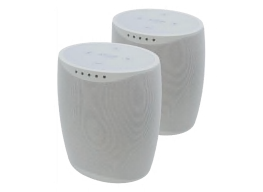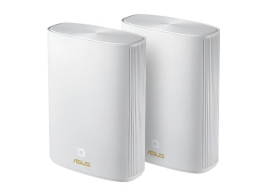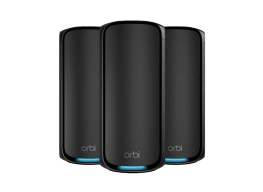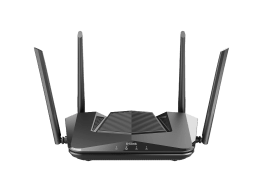Best Mesh Routers of 2024
These models from Linksys, Netgear, TP-Link and others use two or more units that work together to spread WiFi throughout your home
When you shop through retailer links on our site, we may earn affiliate commissions. 100% of the fees we collect are used to support our nonprofit mission. Learn more.

Your wireless router is the gateway between your home and all the internet has to offer, from music, movies, and TV shows streamed via services like Netflix and Disney+ to Zoom calls that keep you connected to far-flung colleagues. It’s hard to imagine a modern home without a robust WiFi network.
But for some people, especially those who live in large houses or densely packed apartment buildings, WiFi can be a source of endless frustration, particularly if you can’t make heads or tails of ever-changing WiFi standards. (We explain those a bit later in this article.)
One possible solution? A mesh router.
Unlike a traditional wireless router, mesh routers come in packs of two or three units that work together to spread WiFi throughout your home. Typically, the base station plugs directly into your modem, while the satellite units wirelessly connect to create a single unified “mesh” network.
Best Mesh Routers
How We Test WiFi Routers
Every model in our ratings is tested by the expert technicians in our labs, just north of New York City, where we simulate a typical home environment, measuring the throughput (which might be thought of as the router’s “speed”) at three separate distances: 8 feet, 20 feet, and 55 feet.
We take into account how easy the router is to set up and manage (which nowadays is often done with a smartphone app); whether it has useful features like built-in Ethernet and USB ports, and parental controls; and the quality of service, a technology that helps prevent your video calls for work from being interrupted by other traffic on the network.
We also evaluate the router’s data privacy policies and whether the model automatically updates with the latest firmware, which can help keep you and your data safe.
WiFi Standards Explained
The current, latest WiFi standard is known as WiFi 7 and was finalized at the beginning of 2024. You may sometimes (including in our ratings) see it referred to by its more technical name, 802.11be.
WiFi 7 supports speeds of up to 46 gigabits per second, up from 9.6 gigabits per second in WiFi 6 and 3.5 gigabits per second in WiFi 5. That’s the on-paper max, however: All sorts of things can affect the speeds you experience in real life at home, including the building materials in your walls and impediments like refrigerators and fish tanks (it’s the water, not the fish).
Because WiFi 7 is so new, you will still see plenty of routers on store shelves based on the older WiFi 6 and WiFi 6E standards. These are plenty fast in their own right, and will likely serve you well for years to come. In fact, WiFi 6E (which came out in 2020) has one of the hallmark features of WiFi 7: Support for the 6-gigahertz band. This band is so spacious that it allows for great performance even in dense environments like apartment buildings.
Home WiFi Mesh Networks
Can’t get a decent wireless internet connection in your home? On the “Consumer 101” TV show, Consumer Reports expert Nicholas De Leon explains to host Jack Rico how mesh networks provide faster speeds and better coverage.
































